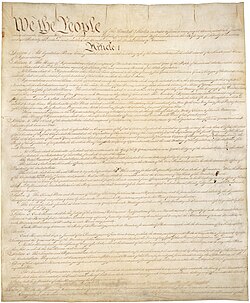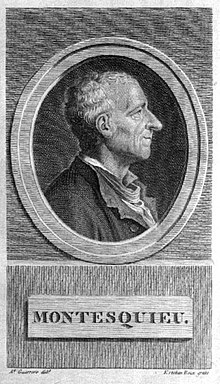Constitutional right
Constitutional law is the branch of public law whose main object of study is the fundamental laws of a State and particularly its Constitution. In addition, this has the possibility of being seen from both the formal and material point of view. In this way, everything related to the form of State, form of government, fundamental rights and the regulation of public powers is a matter of study, including the relations between public powers and citizens.
Political power
Classically, power is known as the ability to influence the behavior of other people so that they comply with what is requested or ordered. In this sense, a body has power when it possesses the coercive capacity to enforce its imperative mandates. The current meaning in liberal democracies is linked to the existence of democratic legitimacy, and to the attribution of dispositive capacity according to the criterion of political opportunity. Thus, the concept is opposed to the power attributed to the Administration or judicial bodies, since they have a will that must be based on a legal text, that is, they have a regulated capacity whose decisions can never be based on criteria of opportunity.. This power needs very strong popular support or be linked to pressure groups or power factors.
Constitution
The constitution is the legal text political, fruit of the constituent power that bases (according to normativism) the entire system, placing itself in it as a norm that collects, defines and creates the constituted powers, limiting them to the service of the people. In addition, it will have the character of supreme norm, so that it will prevail over any other that was later and contrary to it (constitutional hierarchy). According to Kelsen, it is the norm that gives logic to the whole system. Common law will arise from it by derivation and application mechanisms.
Formal structure
Thus, the formal structure of a constitutional text established by the doctrine would be the following:
- Justification of the original constituent power itself.
- National sovereignty.
- Powers constituted.
- Enumeration of fundamental rights (dogmatic part).
Material structure
On the other hand, the material structure of the constitutional text is the following:
- Preamble
- Dogmatic part (individual warranty)
- Substantive fundamental rights.
- Basic procedural rights. (although these should probably be regulated in civil, criminal, labour, etc. codes; not in the political charter as a fundamental rule)
It is important to take into account that Nicholas Machiavelli used the term «State» in his book on political realism The Prince, and that Montesquieu, in his On the Spirit of Laws raises the state under the positive rule and not under the will of the leader of the state.
Doctrinal principles
Division of powers
In all rigor it should be said division of power into different functions, or tripartite division of power, three being the classic ones. Allows effective internal and external control. The pure model projected a situation of total independence between the three expressions of power (legislate, execute what is legislated and decide the rights of individuals).
Rule of Law
This is created when all social and state action finds support in the norm; Thus, the power of the State is subordinated to the current legal order by complying with the procedure for its creation and is effective when it is applied in reality based on the power of the State through its government bodies, thus creating an environment of absolute respect for human beings and public order.
However, it is not enough that there is a public authority subject to the law. In order to be in the presence of a true and authentic rule of law, the legal system of the respective state must meet a series of characteristics that give rise to a real or material rule of law. The concept of rule of law is explained by two notions: the rule of law in a formal sense and the rule of law in a material sense.
National sovereignty
It is an ideological concept arising from liberal political theory, which can be traced back to Locke and Montesquieu (late 17th century in England, 18th century in France). It makes sovereignty belong to the nation, an abstract and unique entity, normally linked to a physical space (the terra patria or homeland), to which both present citizens belong, as well as past and present citizens. future, and is defined as superior to the individuals that compose it. It also consists of both the legal and real capacity to decide definitively and effectively in any conflict that alters the unity of social cooperation; territorial if necessary and even against positive law and in addition to imposing the decision of all the inhabitants of the territory.
Fundamental rights
The basic and inalienable rights or faculties that are recognized in an order for human beings. The theory of natural law assumes that all men should be recognized in any legal system.
Constitutional stability
The constitution must serve as a legal framework for the justification of political power, and for this reason it must enjoy a certain degree of stability in its text, withstanding the passage of successive governments without the need to change its letter. Therefore, the modification of the supreme norm is subject to a large number of restrictions, especially highlighting the requirement of specially qualified majorities for voting on its alteration.
Constitutional supremacy
Concept from the ancient jurisprudential precedent "Marbury v. Madison", and which supposes the structuring of the legal system in a hierarchical pyramid, in which the Constitution would occupy the apex. Thus, supremacy supposes the highest point in the normative hierarchical scale, so that any subsequent and contrary norm that would eventually collide with the supreme norm would cause the nullity of the inferior norm. The further development of this concept is due to Hans Kelsen's pure theory of law.
Constitutional rigidity
Constitutional rigidity is a concept, according to which, the supreme norm has to designate a specific process for its own modification, different from the procedure habitually used for the production of infra-constitutional norms. On the contrary, one speaks of constitutional flexibility the more similar the reform process is to that of ordinary legislative creation.
The degrees of constitutional rigidity depend on a series of disjunctive factors:
- if the reforming body is created and chosen especially for reform or is one of those that usually work
- the number of political institutions whose consent is required to reform the Constitution
- majorities required for reform
- the participation of the people, which can be direct (through a referendum) or indirect (through elections for a new assembly to ratify or draft the reform)
Constitutionality Control and Conventionality Control
The Constitution has the character of a supreme norm, and therefore, its compliance must be guaranteed by the legal system in its daily operation. Ensuring that the constitutional norm is not violated with the acts of the constituted powers is the main objective.
Regulatory collision or Regulatory Conflicts
In the event that two legal norms have content that is incompatible with each other, the so-called normative collision occurs. The most widely used example to illustrate a normative collision involves conceiving a situation in which a norm orders the performance of a certain behavior, and at the same time, another different norm prohibits the performance of said behavior.
In order to resolve collisions between norms, according to the principle of coherence of the legal system, a series of criteria is used that establish which norm prevails, and which norm is repealed.
- Hierarchy: The normative hierarchy presupposes the existence of rules of different ranks, so that the one that is in a top step of the scale destroys the lower standard.
- Season: In the event that two standards of equal rank suffer a normative collision, the later rule in time derogates from the previous rule.
- Specialty: In the event that there are two rules of equal rank suffering a collision, that rule that seeks the more specific regulation of matter prevails over the most general rule.
- Axiological priority: the rule that is safeguarding a higher right in the scale of constitutional values (life superior to property, v.gr.)
Contenido relacionado
Stamp law
Judicial absurdity
Undercover agent


